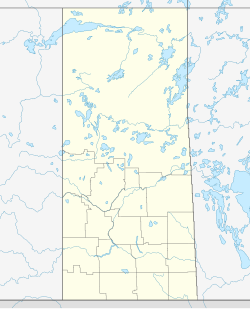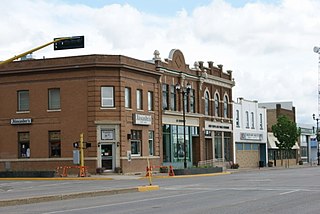
Yorkton is a city located in south-eastern Saskatchewan, Canada. It is about 450 kilometres (280 mi) north-west of Winnipeg and 300 kilometres (190 mi) south-east of Saskatoon and is the sixth largest city in the province.

Swift Current is the sixth-largest city in the Canadian province of Saskatchewan. It is situated along the Trans Canada Highway 177 kilometres (110 mi) west of Moose Jaw, and 223 kilometres (139 mi) east of Medicine Hat, Alberta. As of 2024, Swift Current has an estimated population of 18,430, a growth of 1.32% from the 2016 census population of 16,604. The city is surrounded by the Rural Municipality of Swift Current No. 137.

Estevan is the eleventh-largest city in Saskatchewan, Canada. It is approximately 16 km (9.9 mi) north of the Canada–United States border. The Souris River runs by the city. This city is surrounded by the Rural Municipality of Estevan No. 5.

Brandon—Souris is a federal electoral district in Manitoba, Canada, that has been represented in the House of Commons of Canada since 1953.

Yorkton—Melville is a federal electoral district in Saskatchewan, Canada, that has been represented in the House of Commons of Canada since 1968.

Cypress Hills—Grasslands is a federal electoral district in Saskatchewan, Canada, that has been represented in the House of Commons of Canada since 1997.

Winnipeg North is a federal electoral district in Canada that has been represented in the House of Commons of Canada since 1917. It covers the northern portion of Winnipeg, Manitoba.

Golden is a town in southeastern British Columbia, Canada, 262 kilometres (163 mi) west of Calgary, Alberta, and 713 kilometres (443 mi) east of Vancouver.
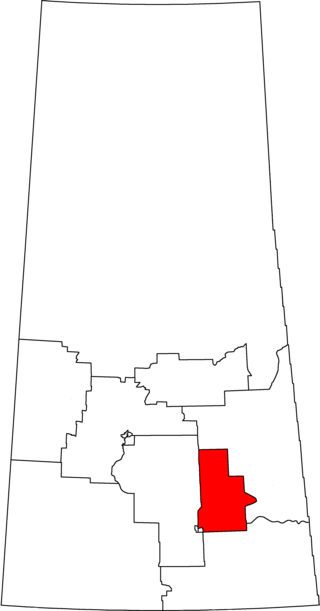
Regina—Qu'Appelle is a federal electoral district in Saskatchewan, Canada, that has been represented in the House of Commons of Canada from 1904 to 1968 and since 1988.

Souris—Moose Mountain is a federal electoral district in Saskatchewan, Canada, that has been represented in the House of Commons of Canada since 1988.

Regina—Wascana is a federal electoral district in Saskatchewan, Canada, that has been represented in the House of Commons of Canada since 1988.
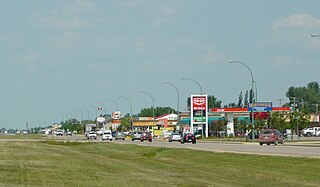
Martensville is a city located in Saskatchewan, Canada, just 8 kilometres (5.0 mi) north of Saskatoon, 10 kilometres (6.2 mi) west of the city of Warman and 14 kilometres (8.7 mi) southwest of Clarkboro Ferry which crosses the South Saskatchewan River. It is a bedroom community of Saskatoon. It is surrounded by the Rural Municipality of Corman Park No. 344. The community is served by the Saskatoon/Richter Field Aerodrome located immediately west of the city across Highway 12, as well as by Saskatoon's John G. Diefenbaker International Airport, only a few miles to the south.
The population withinRegina, Saskatchewan's metropolitan area was 236,481 as of 2016 Canada Census with an annual growth rate of 2.4%.
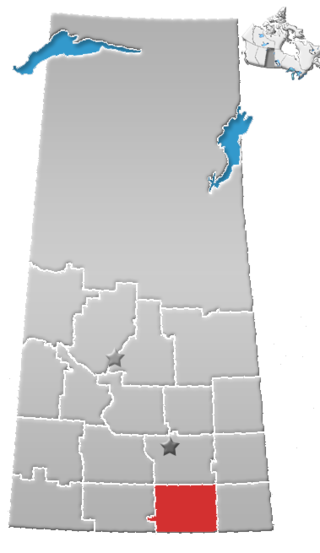
Division No. 2 is one of eighteen census divisions in the province of Saskatchewan, Canada, as defined by Statistics Canada. It is located in the south-southeastern part of the province, on the United States border. The most populous community in this division is Weyburn.

Warman (/ˈwɔrmən/) is the ninth-largest city in the Canadian province of Saskatchewan. It is located approximately 20 kilometres (12 mi) north of the city of Saskatoon, and 5 kilometres (3.1 mi) northeast of the city of Martensville. According to the 2021 census, Warman is the fastest growing municipality in Saskatchewan, and was the fastest growing municipality in Canada between 2011 and 2016. Warman is a bedroom community of Saskatoon. The current mayor is Gary Philipchuk.
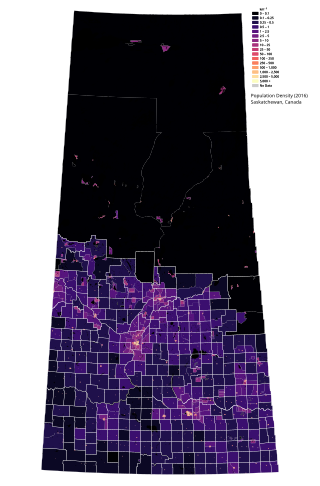
Saskatchewan is the middle province of Canada's three Prairie provinces. It has an area of 651,900 km2 (251,700 mi2) and a population of 1,132,505 (Saskatchewanians) as of 2021. Saskatchewan's population is made of 50.3% women and 49.7% men. Most of its population lives in the Southern half of the province.

The Saskatoon region is the greater metropolitan area of Saskatoon, Saskatchewan. As of 2021 the Statistics Canada estimates the region's population to be 317,480 people.

Sherwood Park—Fort Saskatchewan is a federal electoral district in Alberta, Canada, that has been represented in the House of Commons of Canada since 2015.

Moose Jaw—Lake Centre—Lanigan is a federal electoral district in Saskatchewan, Canada, represented in the House of Commons of Canada since 2015. It encompasses a portion of Saskatchewan formerly included in the electoral districts of Blackstrap, Palliser, Regina—Lumsden—Lake Centre, Souris—Moose Mountain, Wascana and Saskatoon—Humboldt.
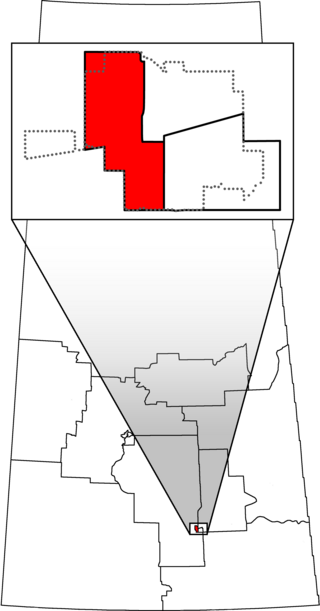
Regina—Lewvan is a federal riding in Saskatchewan, made up of parts of the former Palliser and Regina—Lumsden—Lake Centre ridings within the city limits of Regina.


